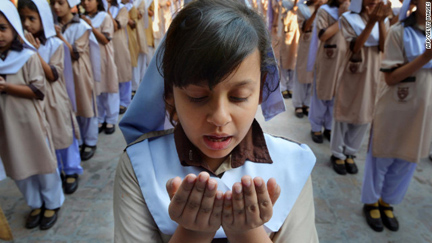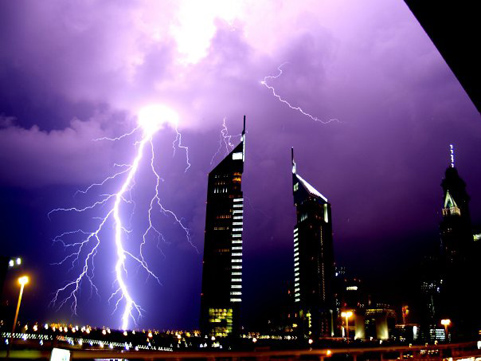
Photograph of lightning over Dubai skyscrapers, taken by Adnan Abdel-Razzak in October, 2012
Monthly Archives: October 2012
On Drones

The Center for Civilians in Conflict and Columbia Law School’s Human rights Clinic have recently produced a report on the impact of drones on civilians. Below is the abstract; the full report can be found in pdf format here.
The Civilian Impact of Drones: Unexamined Costs, Unanswered Questions
Publication | 29 Sep 2012This joint report from the Center for Civilians in Conflict and Columbia Law School’s Human Rights Clinic is an in-depth look at the US government’s covert drone program and its impact on civilian populations. Our objective is to critically assess US government procedures and standards for ensuring civilian protection and responding to civilian harm from drone strikes conducted both outside of full-scale military operations and with a degree of secrecy. The study is based on a review of publicly available materials, interviews with current and former government officials, responses to requests for information from agencies, and previous field interviews by Center for Civilians in Conflict.
Drones are touted as the most precise and humane weapons platform in the history of warfare. The technological advance is significant, but covert drone strikes carry costs for civilians and local communities even as they become a policy norm. Blinded by the promise of this technology and reports of short-term effectiveness in killing militants, policymakers are failing to ask hard questions of the drones program, including whether other tactics or strategies are more appropriate to counterterrorism strategy, and whether US expansion of strikes to new places and against new groups is truly justified.
Malala and malevolence
A fourteen-year old girl is shot in the head for wanting to be educated. It is hard to imagine a more sadistic premeditated attack on innocence. Her name is Malala and her attackers are Taliban extremists who have so perverted the teachings of Islam that they commit the ultimate modern-day shirk: assuming that their cowardly act has divine sanction. The assassination attempt on a school bus is now one of those shots heard across the world. To be sure, the gunshots that have ripped through bodies in Muslim countries number in the thousands these days. The attack on Malala does not override the horrific bloodshed taking place in Syria, the continuing violence in Afghanistan and Iraq and elsewhere. But it stands out as a symbol of what goes terribly wrong when partisan religious fervor enters the political arena.
Pakistan’s president, Asif Ali Zardari, recognizes this: “”The Taliban attack on the 14-year-old girl, who from the age of 11 was involved in the struggle for education for girls, is an attack on all girls in Pakistan, an attack on education, and on all civilised people.” He recognizes that such malevolence puts every young girl in Pakistan in danger and threatens to further divide debates in his country into violent conflict. But this is not only an attack on “all civilised people”; this is an assault on all people. And, as the photograph of a young Muslim girl praying above shows so well, an attack on the very idea of the merciful God she prays to.
I have never met Malala and probably never will. But Malala is my daughter, my wife and my mother. Shooting her is an attack on my family and yours. If the shooters dared to whisper bi-ism-Allah-al-rahman-al-rahim before they pulled the trigger against a child of God, may that same God have mercy on their souls, because they never learned the true meaning of the words they spoke. Continue reading Malala and malevolence
Ottoman Music
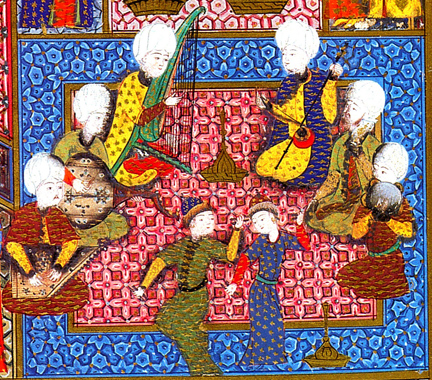
Ottoman ensemble in a Suleymaniye manuscript
For anyone interested in Ottoman music, or music as such, check out the nice webpage just uploaded in the Ottoman History Podcast.
Ottoman Classical Music: History and Transformations
with Mehmet UÄŸur Ekinci
74. Music of the Ottoman CourtWhile the Ottoman Empire was undoubtedly home to rich and diverse musical traditions, the subject of Ottoman music has often evaded historical analysis due to the scant nature of pre-nineteenth century sources on the subject. In this podcast, Mehmet Uğur Ekinci provides a general outline of the history of music during the Ottoman period along with its various waves of transformation and discusses his upcoming publication of Kevserî Mecmûası, an eighteenth century musical treatise that provides a rare glimpse of notation in Ottoman music before the nineteenth century. We also provide a number of recordings of Ottoman music composed during different periods.
A new Salafi politics
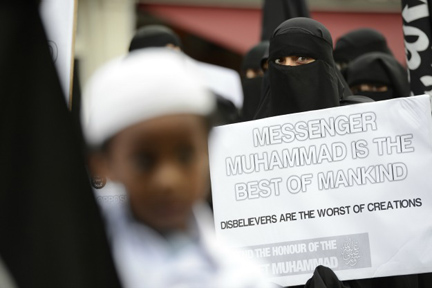
by Will McCants, Foreign Policy, The Middle East Channel, October 12, 2012
Salafis, or Sunni puritans, have been much in the news since they sparked riots at U.S. embassies throughout the Arab world protesting film clips lampooning the Prophet Muhammad. A television personality on a Saudi Arabian-funded Salafi satellite channel in Egypt first fanned the flames, and Salafis ranging from the militant Mohamed al-Zawahiri (the brother of al Qaeda’s chief, Ayman al-Zawahiri) to the mainstream Salafi political party al-Nour fueled the blaze when they blamed the U.S. government and called for protests against U.S. embassies. Salafis in Egypt, Tunisia, Libya, and elsewhere took up the torch, resulting in attacks on U.S. and other Western diplomatic installations across the Middle East.
Others were involved, of course, and the protests were small compared to the protests over the Muhammad cartoons several years ago. Nevertheless, the Salafi-driven protests are one more sign the ultra-religious right is asserting itself as the guardian of the moral order in Sunni-majority countries revolting against the ancien régime. Their noisy performance on the public stage poses a major challenge to emerging democratic systems, fueling polarization inside and fears abroad. But the new political realm also poses challenges to the Salafis who are on unfamiliar ground politically and ideologically.
To understand the political behavior of Salafis today, keep four things in mind: their religious beliefs do not predict their political behavior; they are a minority in almost every Middle Eastern country; the countries where they are a majority are incredibly wealthy; and their appeal and power arises from their commitment to an ultraconservative creed that is out of step with the mainstream. Continue reading A new Salafi politics
Iran, Iraq and Afghanistan: Mr. Peabody explains

For those of us who grew up getting our history from Mr. Peabody and his sidekick Sherman, politics was more than fractured fairy tales and a talking Moose (that had obviously escaped the helicopter hunt of Sarah Palin). So if you want to know why the Middle East is so messed up today, forget about Romney’s comic speech on Monday; here is a cartoon that explains it all. Get in your Youtube Not-So-Wayback Machine and enjoy Mr. Peabody’s view on what really happened.
Challenging the Norm
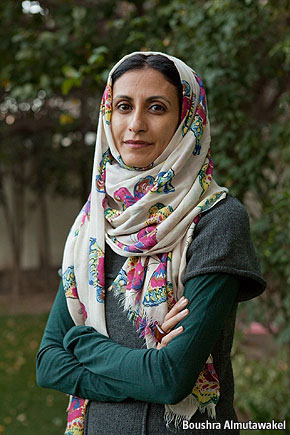
Q&A: Boushra Almutawakel
Challenging the Norm
The Economist, Aug 16th 2012, by S.B.
BOUSHRA ALMUTAWAKEL, a Yemeni photographer, aims to provoke discussions about social norms and question the ways people and cultures judge one another. Her stylised portraits, mostly of Middle Eastern women, challenge the view held by many in the West that the veil is a symbol of oppression. Issues of identity are central to her work. Though she is skeptical of veils that completely obscure the individual, she draws similarities with the way some women hide behind heavy make-up: in both cases, a woman is concealed behind a social mask of sorts, often for her own comfort. Ms Almutawakel (pictured below) is openly critical of certain social expectations of women in Yemen, yet she wears a long black abaya in public because she “wouldn’t feel comfortable otherwise”. This ambivalence pervades her work.
Having studied in America, Ms Almutawakel has returned to live and work in Sanaa in Yemen. Her photographs—controversial among Yemenis—seem designed mainly for a Western audience. But some can now be seen in a show of regional artwork at the National Museum of Yemen in Sanaa.
Ms Almutawakel recently met with The Economist to discuss her photography, her views on women and the role artists play in revolutionary Yemen.
Tell us about the art scene in Yemen.
When I started in the 1990s I was supposedly the first female photographer. There were only a few artists throughout Yemen and we formed a network to hold exhibitions. Now there are many more because digital cameras have made photography more accessible and schools and universities teach design. But the scene is still limited and goes up and down with the economic and political situation. We need support to have our work exhibited locally and internationally. Continue reading Challenging the Norm
Al Shabab vs. Soccer in Somalia
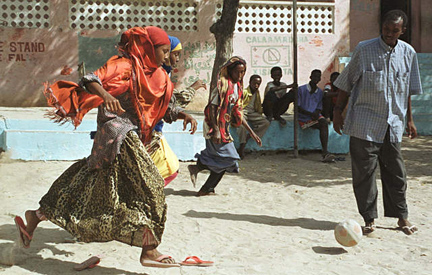
Veiled Somali Girls Playing [“xalaal”] Soccer
Soccer: A barometer of Al Shabab’s retreat in Somalia
By James M. Dorsey, Mideast Soccer Blog, October 5, 2012
Soccer is one barometer of the increasingly successful drive to deprive militant Al Shabab fighters of their grip on large chunks of war-torn Somalia.
With the recent withdrawal of the Al Qaida-linked militants from the port city of Kismayo, the last major rebel-held town, the increasing return of soccer to a football-crazy country where under Al Shahab rule enthusiasm for the beautiful game involved a greater act of courage and defiance than perhaps anywhere else in the world and soccer became a front line in the battle against the Islamists, football highlights the country’s changing battle lines.
The extent of Al Shabab’s retreat is evident from the fact that a campaign that started with the Somali Football Association (SFA) backed by local businessmen and world soccer body FIFA luring child soldiers away from Al Shabab which banned the playing and watching of soccer, and turning them into national youth team stars has mushroomed into the revival of national and regional competitions. For the first time in more than two decades, matches are being played at night, teams travel in relative safety within the country and war-ravaged sports facilities, including Mogadishu’s national stadium, once one of East Africa’s most impressive filled with 70,000 passionate fans during games that was used by the Al Shabab as an arms depot and training facility, are being refurbished. Continue reading Al Shabab vs. Soccer in Somalia
